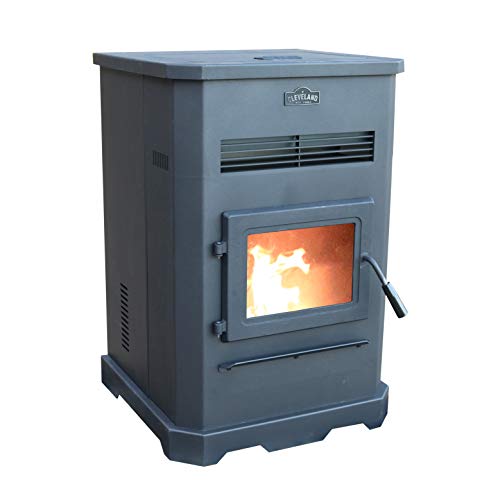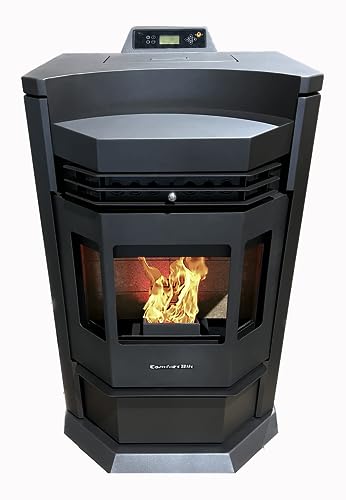10 Things That Your Family Taught You About Ventless Pellet Stove
페이지 정보

본문
 The Benefits of a Ventless Pellet Stove
The Benefits of a Ventless Pellet Stove Pellet stoves produce heat using pellets, repurposed lumber byproducts that produce little or no carbon emissions. They are regarded as eco-friendly since they use less energy and burn byproducts of renewable resources.
Pellet stoves produce heat using pellets, repurposed lumber byproducts that produce little or no carbon emissions. They are regarded as eco-friendly since they use less energy and burn byproducts of renewable resources.You'll have to vent your pellet stove correctly if you want to get the most benefit from it. Engaging a professional can ensure your venting meets local safety codes and standards.
Eco-Friendly
Pellet stoves are extremely energy efficiency in comparison to traditional wood-burning fireplaces. Pellets, the fuel source, is also a renewable resource and doesn't create the same amount of pollution as natural gas or fossil fuels derived from petroleum. However, the process of combustion does generate particulate matter and carbon monoxide It is therefore important to regularly clean your stove and exhaust vent system to ensure they're functioning properly.
Maintaining your pellet stove will ensure it works correctly and safely and will give you the highest heating performance. Regular cleaning of the burn pot, hopper, and exhaust vents will prevent the accumulation of ash, which can affect the efficiency of your stove. Additionally, ensuring that your stove and chimney are properly ventilated and situated at the right distance from your home's walls will help to prevent dangerous carbon monoxide accumulation.
Venting for a pellet stove can be done through the wall, the ceiling or the roof of your home. The type of venting you choose will depend on the location of your home's design and preferences. Vertical venting is preferred since it keeps the flue gases warm, which increases the efficiency of your stove. It also reduces the risk of smoke getting into your home in the event of a power outage.
A venting kit can be purchased for your pellet stove to simplify installation and ensure proper operation of your stove. The kits typically come with an flue pipe made of stainless steel that is insulated that connects directly to the stove on one side and connects to the chimney of your home's masonry or vent through the wall of your home or roof on the other. These kits should only be installed by professionals to ensure that the stove is safe, compliant with local building codes and regulations and is in compliance with all safety requirements.
A pellet stove is a great choice for any homeowner who is looking for a cost-effective method to heat their home with little impact on the environment. If you're worried about the environmental impact of your stove's emissions, look into alternatives to fossil fuels, such as biodiesel or propane gas liquefied to heat your home.
Simple to Operate
Pellet stoves are a fantastic option for homeowners who love the appearance of a wood-burning stove but don't want to bother with cleaning up ashes or a chimney. A pellet stove is a closed device that includes a hopper for the pellets along with a combustion chamber and a fan that blows heated air into the room. The stove can be controlled by the remote control or thermostat. The thermostat can be set to an appropriate temperature so that you don't have to constantly adjust the settings.
Pellets are compressed tightly and can burn extremely hot. They are much more efficient than wood-burning stoves and fireplaces. They also produce less creosote, which could be an ignition hazard. pellet stove clearance sale stoves are easy to use, clean and maintain.
Pellet stoves, unlike other stoves and fuels, are self-igniting. A small surface igniter controlled by the circuitry heats the pellets, causing them to begin burning. The pellets are then blown away from the burner via a tube into an exhaust fan which is able to push the gas and smoke out of the stove through a vent. The filtered exhaust will be blown out through the cleanout tee and into the wall or into the roof depending on the type of installation and local codes.
The majority of pellet stoves are designed to be direct-vented. However, some are available as freestanding models that can be incorporated into existing fireplaces and placed in a hearth. These can be ducted into your home's venting system, however they're not able to provide the same amount of heat as a stove that is vented through a chimney.
The hopper of your pellet stove is situated in the rear. The capacity of the hopper can vary, and you'll need to refill it when the fuel is running low. It is recommended to purchase a larger hopper since it allows you to run the stove for longer durations of time between refills.
The hopper and the blower are controlled by a circuit board which also regulates other aspects of the stove's functions. The circuit board controls the amount of pellets that are fed into the burn pot, and the flow of air through the hopper. The hopper also is equipped with sensors to help regulate the operation of the stove.
Convenient
A ventless pellet stove is a great option if you are looking to heat your home without having to deal with pellets or complex venting. Pellet stoves work by burning compressed wood pellets that are readily accessible in 40-pound bags. They are made of sawdust and wood shavings, which are recycled.
It is incredibly simple to operate. All you have to do is load them, set the thermostat and switch on the fans. The stove will take care of the rest, automatically adjusting to maintain the temperature you want to maintain.
Pellet stoves utilize natural convection to heat rooms but a lot of models include a blower to aid in this process. The blower pulls cool air into the stove and passes it through the heat exchanger that is located on the top of the chamber for combustion. The heat exchanger transmits the warmth from the burning pellets to the air that circulates, and a fan circulates this heated air throughout your living space.
Pellet stoves produce a Small pellet stoves amount of Ash because they use an unclean fuel. However, this does mean that you'll need to clean your ash drawer or pot on a regular basis. The majority of modern stoves have an easy-to-access ash drawer that makes it simple to clean and get rid of the ash.
A pellet stove that is equipped with an alternative power source will continue to function even if the main electricity goes out. This feature isn't for free and the backup power source is only good for eight hours. You might want to consider a gas stove if you're worried about a possible power outage.
A ventless pellet stove will still require a flue, however, the flue is able to run across the horizontal direction to your chimney made of masonry or through an exterior wall. Installing ventless pellet stoves is significantly easier and cheaper because you don't have to run a pipe through the ceiling, and then out your roof.
Efficient
Pellet stoves consume less energy than other types of fireplaces with wood burning, and some models are rated as up to 99% efficient. They achieve this by using technology to ensure that the pellets are burnt completely before exiting the combustion chamber. This is possible due to advancements in combustion chamber design and the use of programmable thermostats. These advancements also help ensure that the heat produced is distributed evenly throughout the home.
Pellet stoves are simple to maintain and release very little or no odor unlike other wood-burning fire places. You only have to empty and refill the hopper on a regular basis, or once a day, and you don't need to carry heavy bags of firewood or spend time cutting down or purchasing it.
As a heating device pellet stoves inserts stoves come with a number of other advantages. They are typically less expensive than a gas or wood-burning fireplace, and can be incorporated with domestic hot water systems to help reduce your utility bill. Pellet stoves can also be used to heat only one room, which will reduce heating costs.
There are a few things to consider before purchasing pellet stoves. Pellet stoves are powered by electricity, therefore they won't work during an outage. This is a major issue for homeowners living in areas with frequent power outages. Certain manufacturers offer battery backups that can give you a few more hours of operation.
While pellet stoves are extremely efficient, they do not offer the same warmth as vented fireplaces. This can be a problem in the event that you own a large home or live in chilly climates.
In order to maximize the efficiency of a pellet stove, it must be properly sized and maintained. A certified professional can assess your home to determine the proper size of stove for its specific heating needs. Homeowners must also clean their stoves regularly and have them professionally cleaned about once a yearly. They should also alter the settings of their stoves according to their actual heating requirements and properly insulate their homes to reduce energy consumption.
- 이전글15 Amazing Facts About Audi A1 Key Replacement You've Never Seen 24.11.01
- 다음글Mastering Online Slots: A Beginner's Guide 24.11.01
댓글목록
등록된 댓글이 없습니다.
